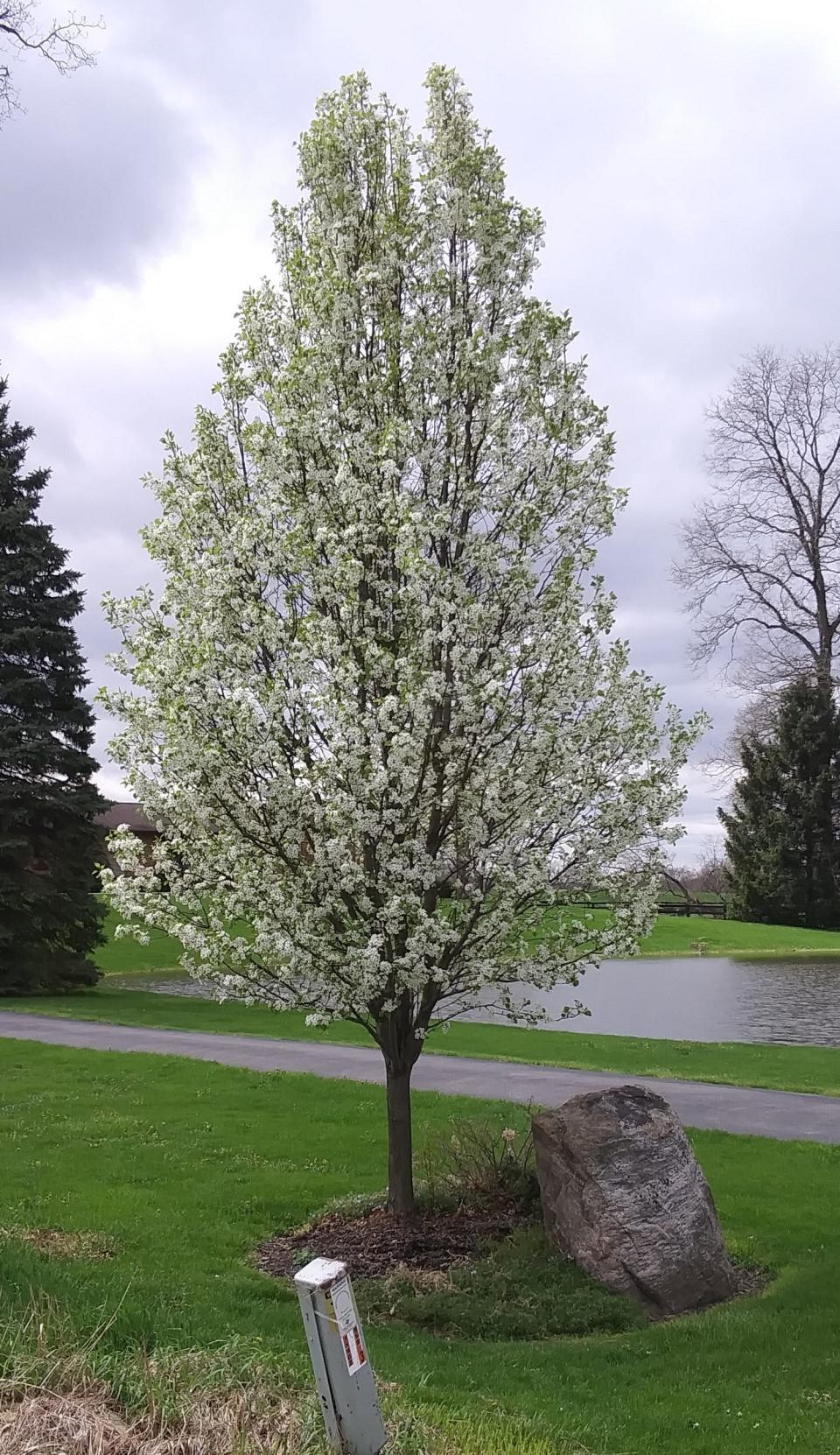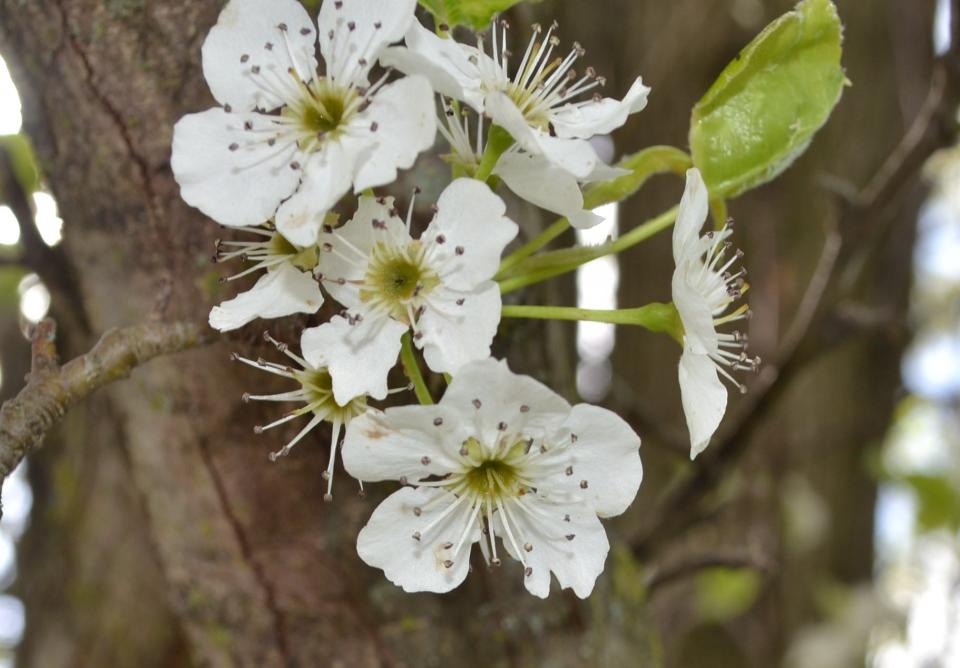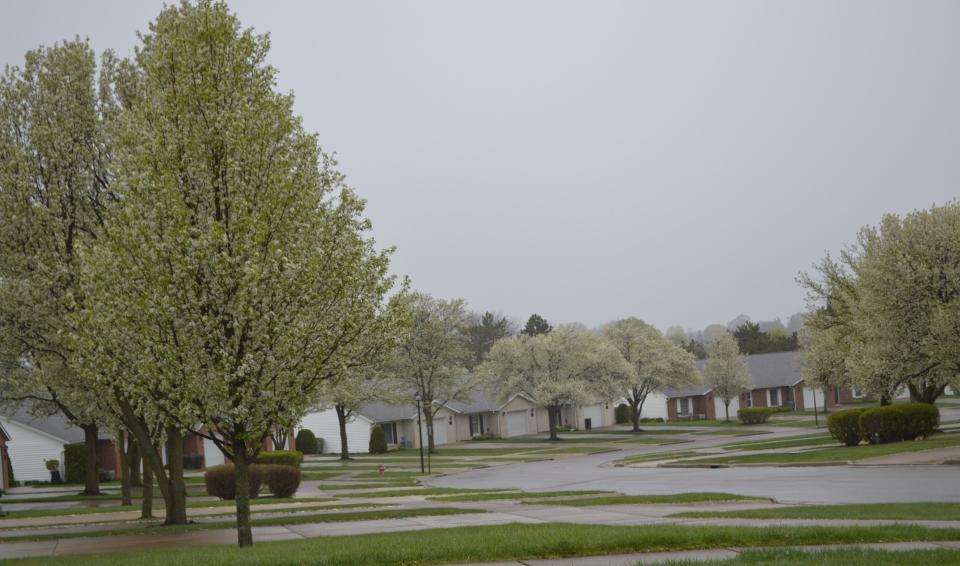A Stroll Through the Garden: The Callery pear and why it's now unwelcome in Ohio
This past week I was at the pool doing my normal laps and one of my friends who asks questions of me regularly asked about the white blooming trees that smelled so bad. It seems pears have dominated some of our neighborhoods. There are a number of flowers with white blooms this time of year, but only one has reached the point of being a noxious weed so far.

When I was learning about this tree, I remember my professor telling me about the weak crotches of this species of tree. What was so odd is we were about to take a hike in Secrest Arborteum to do an identification walk. I took this class in the winter quarter, which I feel was more difficult than the rest of the year. To identify this plant you are kind of limited to the twigs, bark, buds, thorns that would be strong enough to puncture tires and structure. There was still plenty to identify the trees, but you had to put more effort into the job.
We got started on the walk and the professor said, “We had some freezing rain and snow, and this tree is particularly susceptible to splitting. Maybe we’ll see the basic problem that this plant has this morning.” As we turned the corner, we saw half of the tree was on the ground. Just imagine a homeowner waking up and finding half of a 30-foot tree laying in their yard after a storm went through the neighborhood.
You have to figure out how to get rid of the part that’s in the yard and whether or not you really want to keep the rest of the damaged tree. Let’s just hope the tree doesn’t fall on anything important. Weak-crotched trees can be an issue just in growing, which can also be a benefit in this fast-growing tree.

Personally, I liked this Bradford pear or one of the newer cultivars called the Cleveland Select pear. The color was great and came on early in the year. I even designed some of these newer varieties for some of my clients' yards as a specimen tree. I also could plant this tree without fear the soil was terrible and would still do well covering my warranty better. What was exciting for me was the natural pyramidal shape for each of the trees and the burgundy-colored leaves in the fall.
The problem remains that as the tree would continue to grow and the branches would remove the pyramidal shape and become more rounded and weaker, crotches would become more pronounced. For me, I felt it was basically a low maintenance tree and resistant to diseases and insects crab apples would get.
Callery fragrance compared to fish, urine, baby pooh
One other challenge is that the Callery pear flower’s scents have been compared to rotting fish, urine and baby poop. Not a characteristic I would like to talk about very much. Just remember there is usually a great deal of wind this time of year thankfully. When I started my career in landscape design, I did not hesitate to design this tree into locations that made sense. In hindsight it may have been too popular of an idea.
In 1908, Bradford Callery pear or Pyrus calleryana Bradford, was brought to the US to breed fire-blight out of the normal fruiting trees from Korea and China. In 197,7 Michael Dirr, author of “Manual of Woody Landscape Plants” or the landscapers' Bible, expressed how we all should be using more Bradford pears in the landscape. We all may have listened. I did and I liked it.
In the 1960s the Callery pear was promoted as a sterile hybrid, inexpensive, fast growing, transporting well, specimen tree. The smaller cultivars that came along later were said by plant scientists to have bred out the weak branch structure. What was hoped for was that these pears would not self-pollinate, but they could reproduce with another variety of the caleryana species, which made them very productive. We shall find them in many locations all over the area not planted by humans.

Flower come early, take over the area
Here is where the problems start to really appear. Because the flowers come on so early, they overtake the resources from surrounding native species. One of the things I have always liked was that the canopy of the Bradford pear was so dense, which also is a problem in that nothing growing under the tree has a chance of surviving. If they have a chance at reproducing, and they do prolifically, they tend to dominate smaller lots if the lot is no longer being mowed.
Mother birds looking for soft-bodied insects like caterpillars for their young won’t find them. Being a non-native plant, stinky insects have no appetite for this tree and nothing to eat. We won’t find many birds staying in these trees, but the fruit is something birds eat and will spread far and wide. There are white spots in many woods this time of year where these Bradford pears have been transplanted by birds and may be able to persist.
In January 2018, Bradford pears were placed on the invasive species list in Ohio. This means in-state nurseries and landscapers must phase out selling the tree over five years. This also means on Jan. 1, 2023, it was illegal to sell flowering Callery pears in Ohio, and we should find no Callery pears in any in-state nursery today for sale.
Lots of plants are in bloom this time of year. If you have any challenges in your yard, let me know and I shall do the best I can to help at ericlarson546@yahoo.com. Thank you for participating in our column.
Eric Larson of Jeromesville is a veteran landscaper and gardening enthusiast and a founding board member of the Ohio Chapter of Association of Professional Landscape Designers.
This article originally appeared on Mansfield News Journal: The problems with Callery pear trees and why they're illegal in Ohio

